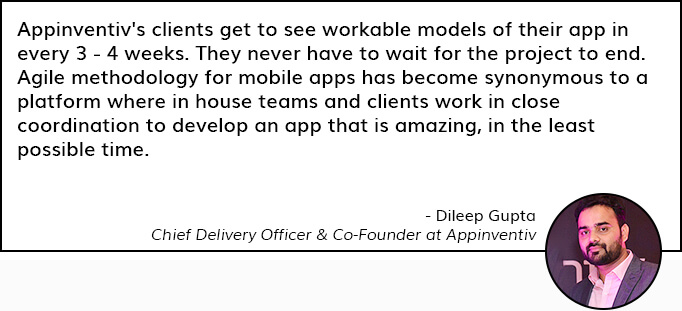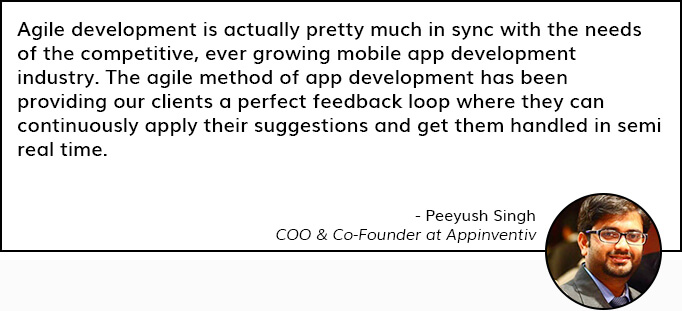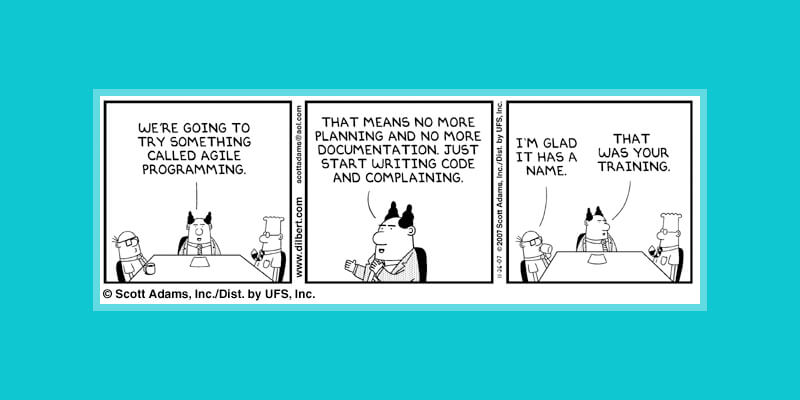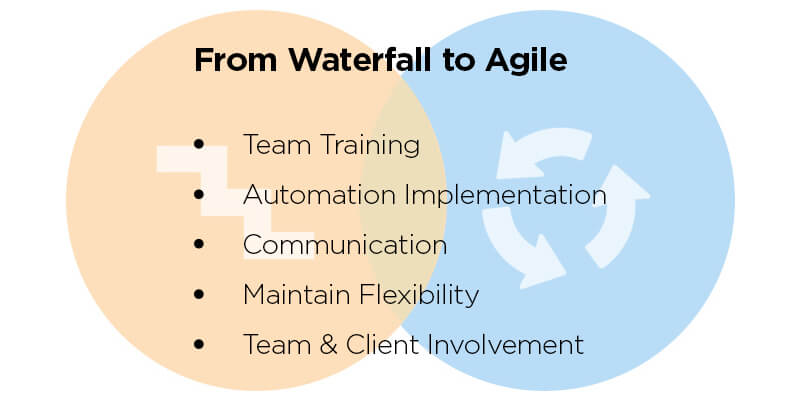Since the official launch of Manifesto for Software Development document in 2001, Agile had created an impression of being a development methodology specific to Software Development. But once the process started getting recognized by Harvard Business Review and McKinsey & Company, etc. its adoption in other business cycles/process followed.

And now, in 2018, 17 years after the Agile’s first appearance, the methodology has got its fair share of adoption in a number of prominent industries, with Mobile Application Development being the most evidential one.
In this article we will be looking at the factors that make Agile the right combination for the ever growing and changing app market, along with that we will be looking into the misconceptions that surround the Agile Methodology, which tends to keep businesses on a fence even today.
But before we get into that, let us rewind the answer to What is Agile Development.
What is Agile
Agile Methodology is the term that is used for accrual and iterative app development approach that involves breaking down of the whole mobile app development process cycle in a number of different tasks. The whole set of segregated processes are then categorized in a number of sub-tasks, where each one of the tasks are treated as separate modules along the app development team. Then, every single of the module is handed over to a specialized cross-functioning team of specialists who then work on every module as an independent mini-project.

The method helps multiple teams with developing the different parts of the app simultaneously. The complete project then becomes a blend of several small modules. When you employ Agile development for mobile apps, it not just reduces the amount of associated risk, but also give the developers a complete freedom and flexibility for developing an amazing mobile app, which holds the ability to adjust to alterations very quickly, post-release.
Read: A Guide To Agile Scrum Methodology in Mobile App Development
What Makes Agile Methodology Ideal for the Mobile App Development Industry
Take a look at the various factors that define the quality of a mobile app development process:

- Short development cycles
- Short life cycles
- Frequently shifting user demands
- Limited hardware
- Must download quickly
- Must be easily updatable
All of these unwritten quality standards add up together as a requirement for the mobile app development companies – How to build high quality apps that are constantly changing with changing users’ needs while maintaining a faster time to market?
A requirement whose fulfillment lies in – Agile Mobile App Development.

The in-sync Agile attributes ultimately take businesses to a place where they get an app which is convenient and memorable to use, is adaptable, and lastly but most importantly, is ready to grow with the growing user needs.
Read: Reasons why we Trust Agile for our Mobile App Development Process
Even at a time when the app development industry is singing the tune of the easiness and speed that comes with Agile development for mobile apps offers, there are a number of businesses that are still sitting on the fence. And the reason behind this is the prevalence of misconceptions about it.

Let us try and clarify a few of the most common ones –
What are some of the misconceptions about agile methodology for mobile apps that are still keeping businesses from benefitting from its true potentials?
Here it goes –
The Three Business Impacting Misconceptions about Agile Methodology

1. It doesn’t require any kind of documentation
While it’s true that the aim of Agile methodology is to reduce documentation and focus more on the actual mobile app development, the method doesn’t come with the complete absence of documentation.
In order to employ an efficient Agile methodology for mobile apps development, businesses will have to rely on value driven, business beneficial, focused documentation.
2. Reading an Agile manual is enough
Another misconception that hurts mobile application development process immensely is believing that reading about Agile methodology for mobile apps step by step is enough to successfully implement it in the business.
While reading guides on the internet can prepare you in terms of your expectations, you will only be able to make the most of your Agile adoption when you start applying in to your processes.
3. It doesn’t work with other development models
The next, biggest misconception that makes businesses sit on the edges when it comes to employing Agile methodology in their business is that the process cannot be combined with the prevailing development methodologies in the company.
However, the fact is far from true. In reality, Agile can be introduced in any mobile app development methodology, even its seemingly stark opposite counterpart Waterfall method. There are ways to blend both methodologies in parts, using the best of each.
So here were the three main misconceptions revolving around Agile methodology, that are still keeping businesses from exploring its true power. Other than these, there are a number of other misconceptions as well such as Agile doesn’t require planning or Agile doesn’t need a managerial team support, and then there is the most common one – Agile only works in Software Development Companies.
Irrespective of what negative you must have heard about Agile, I am sure that the truth would be far from it. Because, like every mobile app development methodology prevalent in our industry today, even Agile takes a proper understanding and time to be learned and practiced.
Now that your misconceptions are cleared and you already know the power that Agile methodology comes with, let us look into the steps of migrating into Agile from your traditional development for mobile apps method.
Read: Agile or Waterfall: Which is the Right Mobile App Development Approach?
Steps to Easily Transition From Waterfall to Agile Methodology

Transitioning into a new methodology for the development of mobile app and that too the one that keep teams on their toes, from methods that are exact opposite is not easy. For an easy and successful transition, businesses will have to ensure that it is gradual and the teams are comfortable with the change.
Here are the steps that are known to make the transition easy from Waterfall to Agile Methodology –
1. Train your Mobile App Development Team
Before you roll out the new process documentation in your company, you will have to ensure that your team is comfortable with the change. You will have to get them on the same page before expecting them to leave out their methods and processes for a new one. What you can do is hire an Agile expert to hand hold your team through the exact working of Agile methodology of development for mobile apps.
2. Implement Automation in the Work Process
The next step in making the transition from Waterfall to Agile methodology easy is implementing automation wherever possible. The aim of Agile is to enable faster time to market while keeping the mobile app quality intact, something which is only possible when you make use of the various automation tools for every mobile application development process.
3. Go one-step-at-a-time While Being Communicative
Instead of removing the whole Waterfall model from your work process from the scratch, implement Agile gradually in one process at a time. And while you do it, talk to your mobile app development team constantly to get their views on the change and to check if they are facing any issues so far.
4. Remain Flexible
You will never be able to transition efficiently from Waterfall to Agile Methodology if you are stuck with a set working style or process. You will have to be flexible in terms of new, viable methods that the team will have to apply to get the work done faster.
5. Involve Everyone
The last and most important element of successful transition and to make the most of agile methodology for mobile apps is active involvement from everyone in the team and the client.
You will have to create an environment that is comfortable in a scenario where the work is showcased to everyone in the team and the whole ecosystem in general is highly transparent. It is only when your team is comfortable with being in the center of the action in the open among the other team and with the client, when they will be accepting of the process as a whole.

strategies your digital product.




